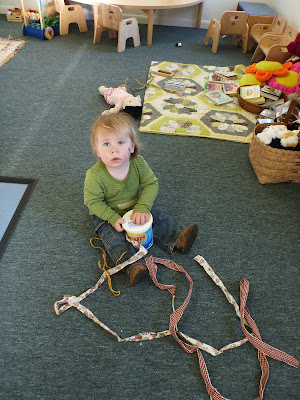 Experiment with ramps: Using cardboard or wood create some ramps in your play space. Not only are ramps easy to make they help infants and toddlers to experiment with physics and gravity's effect on their trucks and cars
Experiment with ramps: Using cardboard or wood create some ramps in your play space. Not only are ramps easy to make they help infants and toddlers to experiment with physics and gravity's effect on their trucks and cars 
Talk to your child about what the trucks are doing. What jobs does the truck have? Where are they going today.
Spur deeper play by adding card board boxes for garages.
Local hardware stores will give away keys that were messed up.
Use scrap paper, shredded paper, pieces of cardboard, or rocks to hull in the truck.
Add truck books that go beyond just the truck names. Some great truck books with a plot include Little Blue Truck, Little Blue Leads the Way, Goodnight Goodnight Construction Site, My Truck is Stuck, Truck by Donald Crews, Grandma Drove the Garbage Truck, Trucks Roll, Truck Stuck, Truck by Byron Barton
For children under two their play is typically physical. They want to understand gravity and movement. They are negotiating space for their body and the vehicles. They want to hold it, open it, flip it over, and check each part.
Older children (especially boys) will use the truck as a part of a large drama. The truck has a job; the child is making decisions and overcoming challenges. As children get to this age you want to help them to plan for the truck's work and what they are going to do. Challenge them to represent that work in another way, acting it out for dad, writing their own truck book, telling mom the story of the truck's day, and drawing the truck. This helps children to think deeper about their play.
If you want to spark interest in a toy that has lost interest consider moving it to a new place, setting the scene with a garage or ramp, and closely observing the child's play. See where they are and help support them as their ideas develop.















